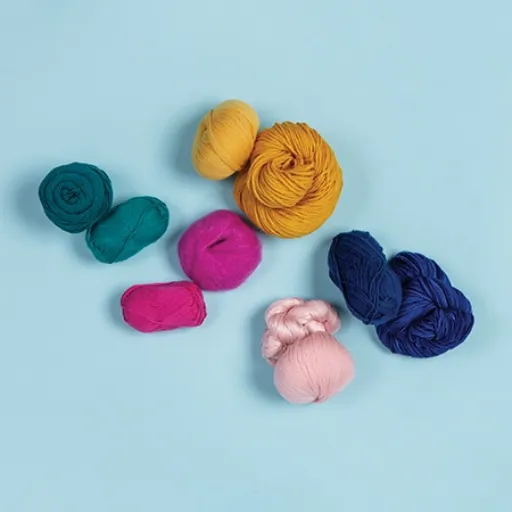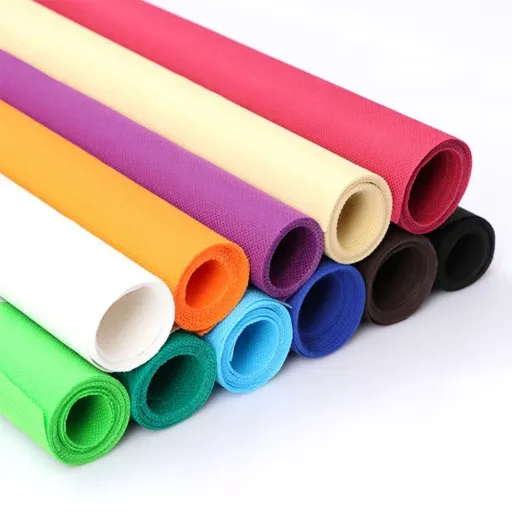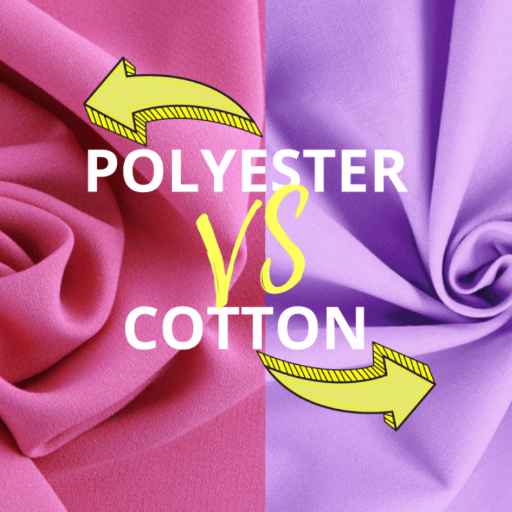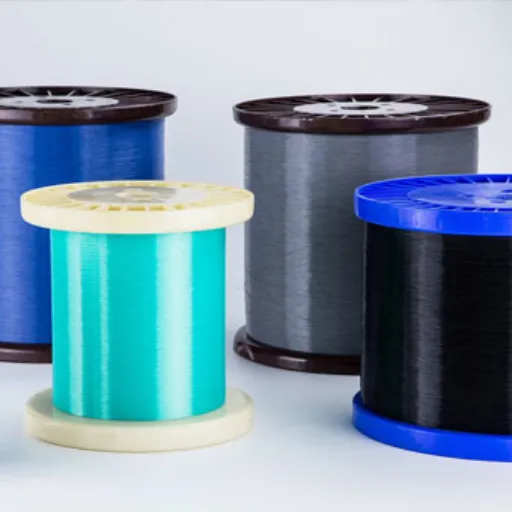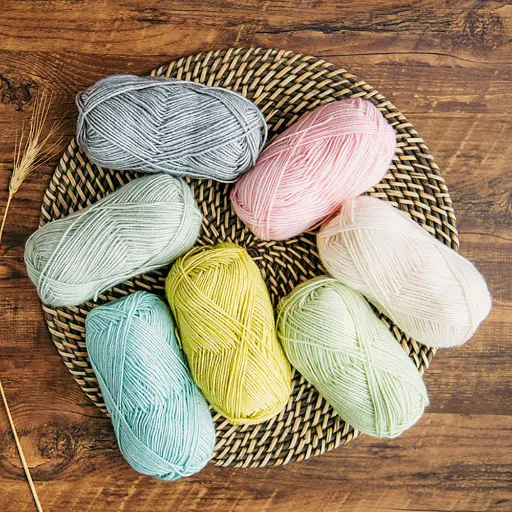Acrylic yarn, for many, is a household word for designers and yarn crafters alike. This is mainly due to its versatility, affordability, and wide range of colors. Proper knowledge of acrylic yarning is, thus, essential to ensure its very life. Whether you have just completed a cozy, handmade blanket or a day-to-day fashionable scarf, knowing how to wash and maintain these acrylic yarn items is crucial to keep them looking shiny and fresh for years to come. This guide will teach you everything about washing acrylic yarn: the best ways, tips, precautions, and how to make your creations last through time.
Understanding Acrylic Yarn
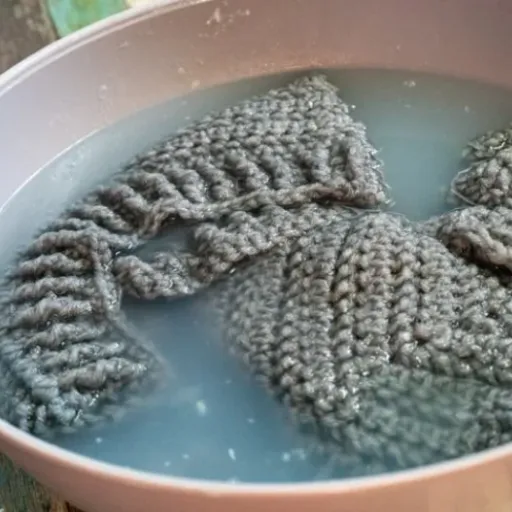
Acrylic yarn is a synthetic textile fiber composed of polymers, developed to emulate the properties of natural fibers while offering durability and lower pricing compared to natural fibers. According to some sources, acrylic is lightweight, resists wrinkling, and is unlikely to distort or shrink under normal conditions, unlike wool or cotton. Furthermore, acrylic yarn is available in machine-washable form and retains its dye well over time, making it a standard option in many projects, ranging from clothing to home décor. Its versatility and easy-care properties certainly make it a worthy choice for new hands in crafting and for those who have been in the trade for years.
Key Characteristics
Durability
Acrylic is a strong, abrasion-resistant material that is ideal for use in heavy-duty applications, such as blankets and garments.
Lightweight
When fashioned into clothes and accessories, its lightweight gives a feeling of comfort.
Color Retention
Acrylic colors stay as vibrant after repeated washing.
Low Maintenance
It features low maintenance due to its machine-washability and wrinkle resistance.
Affordability
Unlike natural fibers, acrylic is generally inexpensive and therefore accessible to a broad spectrum of crafters.
Why It’s Popular
Acrylic has gained immense popularity because it offers an irreplaceable combination of qualities that perfectly suit the modern crafter’s needs. In data obtained through search engines, the search terms “affordable yarn,” “easy-care fibers,” and “vibrant yarn for knitting” slowly and gradually increased, indicating a growing interest in such acrylic-like, accessible, and versatile materials. Being affordable makes it appealing to those on a budget, while easy maintenance aligns with the fast-paced lives most people lead. Plus, the ability to retain bright colors surely attracts those who want to stand out in their designs. This convergence of practicality, affordability, and visual appeal has ensured that acrylic yarn is one of the most popular choices among knitters and crocheters.
Why Proper Washing Matters

Washing with utmost care is the primary factor in maintaining the quality of your finished projects for an extended period. Improper washing of these products can cause shrinkage, fading, or damage to the fiber, ultimately reducing the sturdiness and aesthetics of your work. Proper cleaning procedures, as mentioned on the label, help preserve the vivid colors, texture, and essence of the material, ensuring your work looks perfect for years to come.
Preserving Quality
Ensuring gentle washing and care practices will help prevent any rupturing of handmade items, such as knitted or crocheted projects. Always check the fiber content, follow the care instructions provided on the yarn label, and use lukewarm water for handwashing, along with any detergent specifically designed for delicate fibers. Never wring or twist your items; instead, gently press out excess water and lay them flat on a clean towel to dry, then gently shape them to their original dimensions. Store the projects in a cool, dry place, away from sunlight or moisture, and preferably in breathable bags to prevent dust and pests such as moths. These preventive steps will make sure the condition of your handmade works remains as immaculate as the day they were created, even after a considerable amount of time.
Extending Lifespan
The protection of your handcrafted goods requires a specific storage protocol and certain preventive measures. According to modern protein articles, when an item is stored in climate-controlled conditions, the likelihood of wear and tear, whether due to humidity, temperature fluctuations, or exposure to sunlight, is reduced. Fold delicate fabric or paper with acid-free tissue as an extra layer of protection against folding and discoloring. Cleaning should be done using cleaning materials specifically designed for the item, and spot testing should be performed to prevent damage. With proper care, you will maintain the beauty and functionality of your handmade creations without delay.
Common Mistakes to Avoid
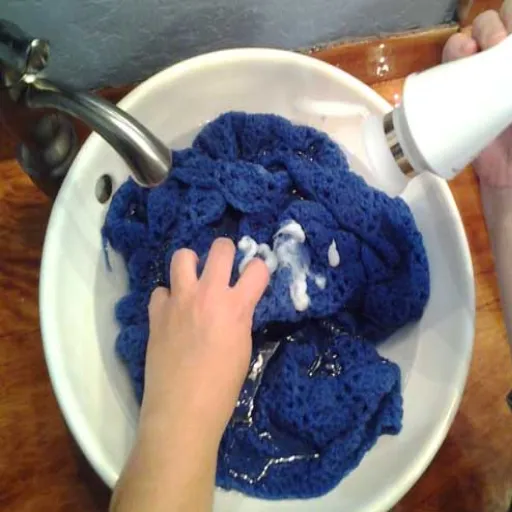
Hot water can be a common culprit abused while washing acrylic yarn, as it causes more weakening of the fibers or loss of their shape. It is always advisable to use cool or lukewarm water to ensure good care for the yarn. Avoid detergents with strong chemicals and bleaches, as they can damage the fibers and compromise the yarn’s softness. Use a mild detergent that is gentle on the yarn. Be cautious when using a machine washer; it is best to use the delicate cycle, if possible, and place the items in a laundry bag for added protection. Lastly, avoid wringing or twisting acrylic yarn when drying. Lay it flat on a clean towel, allowing it to air-dry while retaining its shape.
Using Hot Water
Hot water in garment care can be quite contrasting in nature. Hot water can strip away strong stains, kill bacteria, or eliminate unpleasant odors from fabrics. On the other end of the spectrum, this same technique can cause clothes to shrink, fade, and lose strength, especially if they are delicate or synthetic in nature. Always check if your garment is suitable for high temperatures when washing in hot water. For clothes that may be damaged by washing, always opt for cold or lukewarm water. By using hot water only when necessary, one gives clothes a greater chance of a longer life.
Using Harsh Detergents
Harsh detergents are effective on stubborn stains and dirt, but they also slowly damage the fabric. These harsh chemical detergents can actually eat away at natural fibers, making them brittle, fading color, or even forming holes in your clothes. Also, an irritant factor is present for sensitive skin due to residue left behind after laundering. Some good, eco-friendly detergents and mild detergents effectively clean without harming fabrics or the environment.
Tips and Tricks for Acrylic Yarn Care
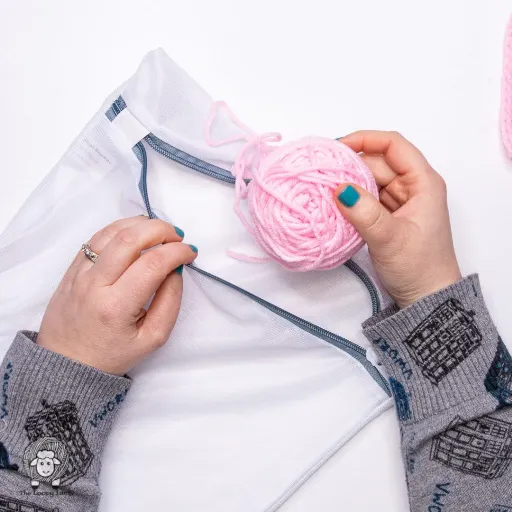
- Use Cool or Warm Water: To prevent damage or stretching, wash acrylic yarn items in cool or warm water, as heat can cause the fibers to warp.
- Choose Mild Detergents: Select a wash whose ingredients are mild or environmentally friendly, avoiding harsh chemicals that may diminish the fibers.
- Hand Wash or Gentle Cycle: Use the gentle cycle if washing by machine. Sometimes, the safest method of washing for those attractively made pieces would be hand washing.
- Avoid High Heat When Drying: Dry these delicate items made of acrylic yarn flat in the air to retain their shape. And if you’re in a bit of a hurry, put them on low heat in your dryer.
- Prevent Pilling: Turn the garment inside out before washing to minimize pilling and reduce friction against other clothes.
Maintaining Softness
Care and attention must be provided to maintain the soft feeling of acrylic yarn. Avoid using fabric softeners, as residues can accumulate between uses and eventually reduce the softness. Instead, use the white vinegar rinse in the final wash cycle, as it will gently soften the fibers without causing any damage. Furthermore, gently brushing the fabric’s surface with a soft-bristle garment brush will help keep it smooth and fluffy. If properly stored in breathable bags or containers, this will also prevent dust and moisture from compromising their softness.
Storing Acrylic Projects
I either keep them in a place with a cool climate and dry air or away from direct sunlight so that they may not fade or get damaged. I prefer breathable bags and boxes as storage containers for my projects, allowing air to pass through while preventing moisture from being trapped, which can damage the actual work. That way, my work will remain preserved for eternity.
Expert Advice and Insights
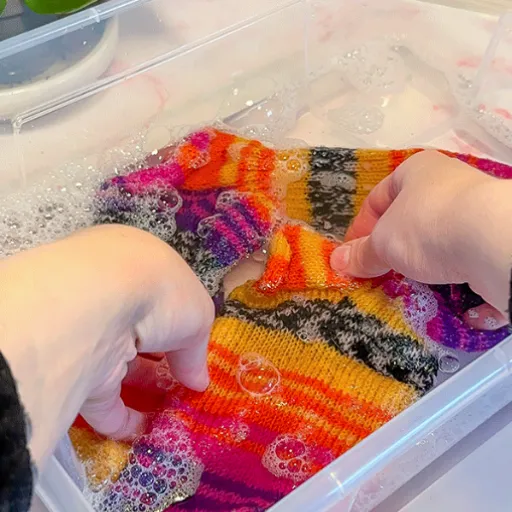
When it comes to maintaining the quality of yarn-made creations, storage is the key. Always use breathable containers to allow for ventilation and prevent moisture buildup, as this can create molds or foul odors. For storing items for the long term, add acid-free tissue paper to protect the delicate pieces. If possible, keep the projects out of direct sunlight to prevent the colors from fading. Also, avoid keeping them inside plastic bags for long periods, as plastic tends to trap humidity. If you worry about moths, opt for natural repellents like cedar blocks or lavender sachets, as they keep them away without using harsh chemicals.
Quotes from Knitting Enthusiasts
“Knitting has been my sanctuary; it’s amazing how creating something with your hands can give so much peace.” – Avery W.
“As I knit, I feel connected to generations before me who found joy in this craft. It’s timeless.” – Mia R.
“Every stitch tells a story—it’s a beautiful way of expressing myself while relaxing.” – Liam T.
“Knitting isn’t just an activity; it’s a therapy session woven into yarn.” – Sophia L.
Pro Tips
- 1
Start with Simple Patterns: If you are a beginner at knitting, opt for traditional patterns such as making a scarf or even a potholder. These projects are critical in mastering the core analog principles and also in enhancing skills. - 2
Invest in Quality Yarn: Selecting the right yarn is a crucial aspect of making knitting an enjoyable experience. The goal is to purchase soft, long-lasting yarns that are also suitable for the project’s level. - 3
Use the Right Tools: Ensure that your needles match the type of yarn you are using. Circular needles are highly recommended because they can be used for a variety of projects and are more versatile, especially for large-scale projects. - 4
Learn to Read Patterns: It is good practice to interpret knitting shorthand and patterns, as they allow you to capture more sophisticated compositions gradually. - 5
Fix Mistakes Easily: Always keep a small crochet hook with you while working on knitting, so you can easily retrieve dropped stitches without having to undo the entire work. - 6
Take Breaks: It is advisable to take small breaks during extended knitting sessions. This helps prevent fatigue. Also, take a few moments to relieve your fingers and arms from the continuous use.
Frequently Asked Questions (FAQs)
Reference Sources
Here are three reputable and respected authorities on “can I wash acrylic yarn” that can be used to verify if your article is correct:
| Source | Description |
|---|---|
| From Fiber to Fabric: Acrylic – Utah State University Digital Commons | Gives a detailed view of acrylic fibers, the characteristics of acrylic fibers, and care instructions relating to washing and maintenance. |
| EC65-445 Wash and Wear Fabrics – University of Nebraska-Lincoln Digital Commons | About easy-care fabrics, such as acrylic, their washability and wearability are discussed. |
| Crochet Made Easy – University of Wyoming 4-H Program | Gives practical instructions for the care of crochet works, including looking up washing instructions for yarns such as acrylic. |








